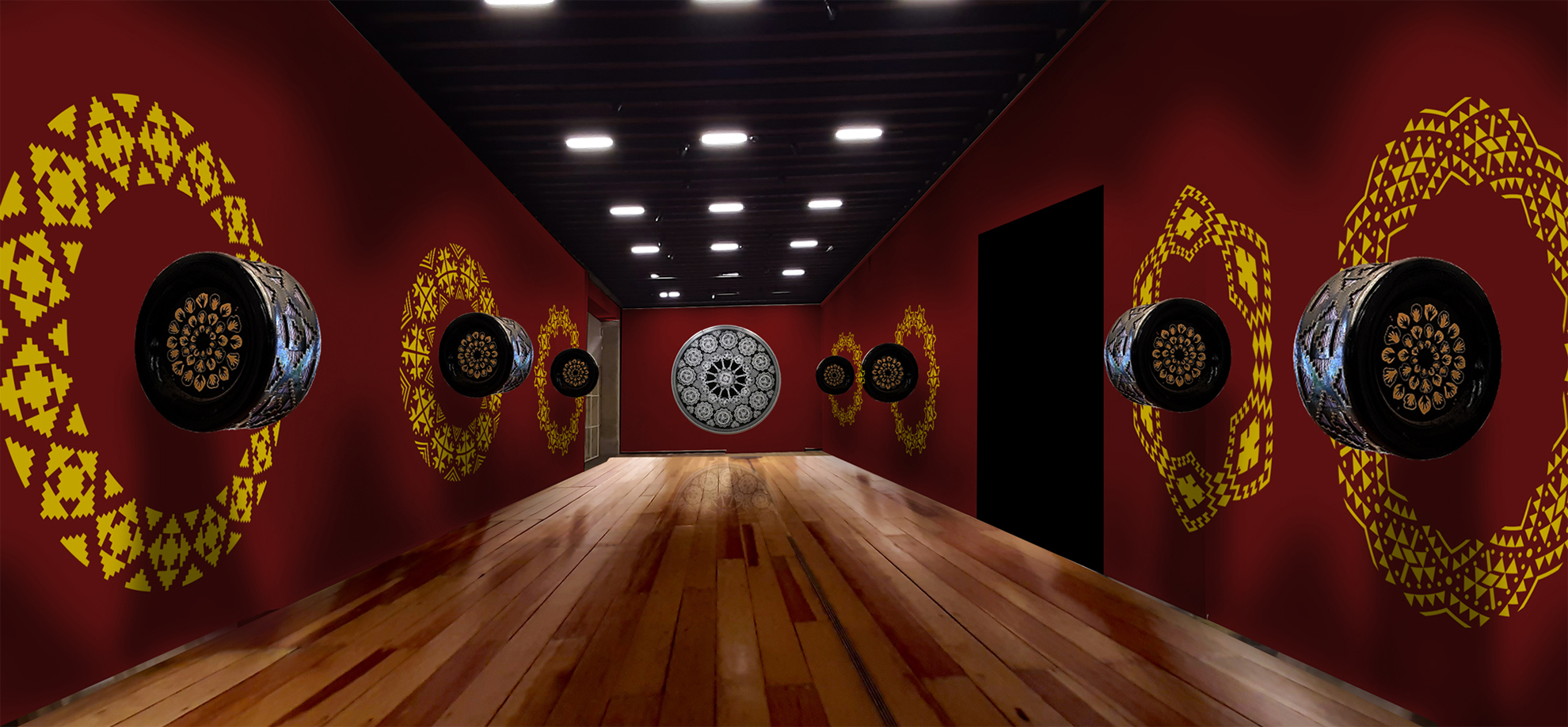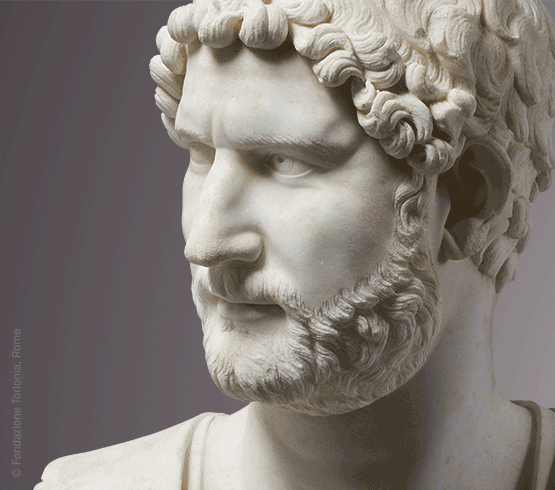When do materials matter? Some artists might say: always. But in Betsabée Romero’s artworks, the answer is as obvious as it is complex: Materials matter most when they move the viewer.
As someone who is fascinated by art-and-sport overlaps, I was immediately curious about Romero’s references. I had to know more about this ritualistic ballgame and, honestly, why Nascar?
Romero, who lives and works in Mexico City, explained that her work with the automobile as art material began when she was invited to participate in inSite 1997, on the border of Tijuana and San Diego. It was there that she saw how the car was an important object in the culture, not only in the United States, but for Mexicans.
Readers may be familiar with Romero’s work in the Mexican Pavilion at Expo 2020 Dubai, or the large tractor tires engraved with pre-Hispanic iconography installed on Park Avenue in Manhattan, or her comprehensive exhibition and research project The Endless Spiral at the 60th International Art Exhibition—La Biennale di Venezia. These are just a few of the more than 100 individual exhibitions on 5 continents around the world.
Al reverso de la pista highlights Romero’s interest in rituals, both ancient and contemporary, referencing the ball games that were important in the mythologies and cultural life of Mesoamerica civilizations, sometimes involving human sacrifice—a powerful metaphor for today’s capitalist system of status-driven car culture and sports superstar worship.
In Romero’s version of the ball court, circular goal posts are made from Nascar racing tires carved with motifs from the cultures of Original Peoples from across the Americas. Lining the interior of the tires, and therefore visible through the incised patterns, are rebozo shawls. The juxtaposition of harsh manufactured rubber and colorful textile handicraft is a jarring reminder of cultural traditions that are being stamped out by the speed of technological advancement, even if the end result is extinction. The tires also refer to movement—migrations—across imposed borders and the impact on ecologies, environments, and communities.
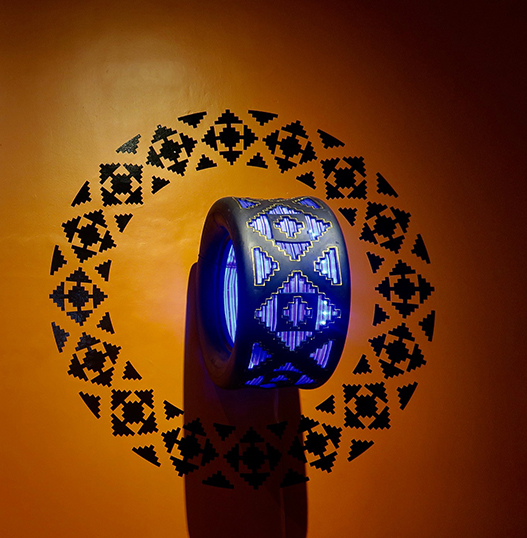
1 ⁄4
Betsabée Romero, Al reverso de la pista [On the Other Side of the Track], 2022, cut and engraved Nascar tires painted with gold leaf; traditional shawls; vinyl on wall, Collection of the artist, Courtesy of the artist, © Betsabeé Romero
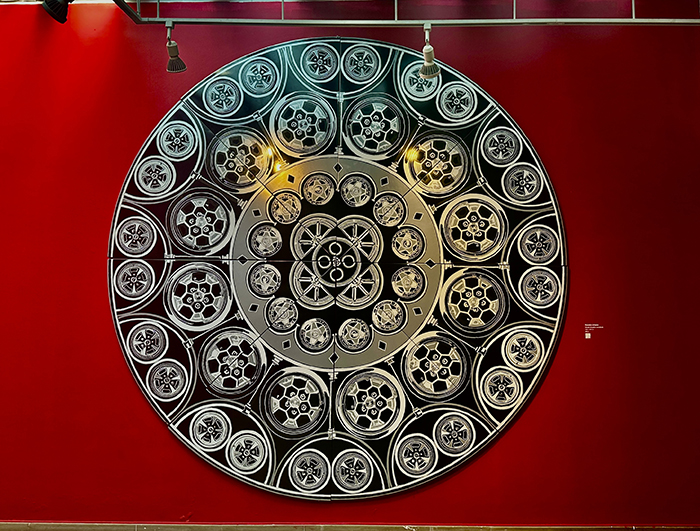
2 ⁄4
Betsabée Romero, Rosetones de asfalto [Asphalt Rosettes], 2010, pewter with enamel, 98 x 98 in, Collection of the artist, Courtesy of the artist, © Betsabeé Romero

3 ⁄4
Betsabée Romero, Al reverso de la pista [On the Other Side of the Track] (detail), 2022, cut and engraved Nascar tires painted with gold leaf; traditional shawls, Collection of the artist, Courtesy of the artist, © Betsabeé Romero
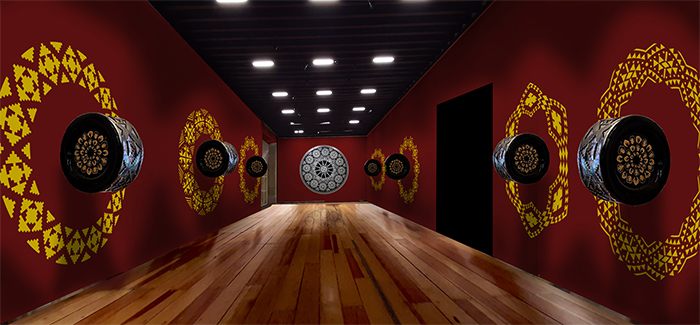
4 ⁄4
Installation rendering of Betsabée Romero: Al reverso de la pista / On the Other Side of the Track, 2025, Courtesy of the artist, © Betsabeé Romero
That sacred aura is reinforced by a silver oculus made from hubcaps and car parts placed at each end of the gallery. The glow brings to mind stained glass, spiritual enlightenment, and also the spark of creative expression made visible through materials.
The exhibition, planned years in advance, mirrors today’s headlines about the current administration’s violent attempts to track and remove any traces of diversity and multiculturalism from American society.
Romero believes that art can move people to action. But it depends on what matters to each of us and how our beliefs materialize.
“We must work together, to make memories together,” says Romero. “That’s why I want to give an experience more than information. The museum permits us to share cultures and that is the thing that may heal people of the polarizations that are not good for the world.”
—NANCY ZASTUDIL

